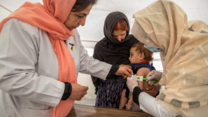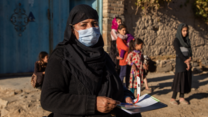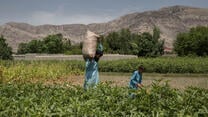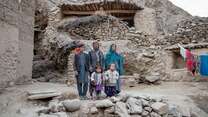One year after the shift in power in Afghanistan, the country is facing an economic and hunger crisis that could kill more people than the past twenty years of war.
Efforts to isolate the Taliban, combined with the policies of the de facto authorities themselves, have harmed everyday Afghans and pushed the country to the brink of famine. Restrictions on women’s ability to work have thrown even more families into poverty.
Find out what Afghans are facing and what the world can do to help.
When did the Taliban take over Afghanistan?
On August 15, 2021 the Islamic Emirates of Afghanistan, commonly known as the Taliban, entered Afghanistan’s capital city, Kabul. By August 30, when U.S. troops pulled out of the country, the Taliban took control of the city and became the country’s de facto authorities.
The event dominated news headlines. More than 123,000 civilians were evacuated from Afghanistan by the U.S. and its allies with 76,000 Afghans evacuating to the United States.
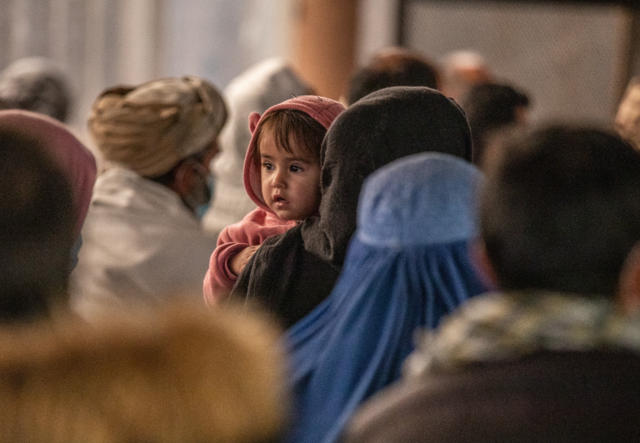
What has happened in Afghanistan over the past year?
The economy has collapsed
“As global leaders sought to economically isolate the Taliban, their policy approaches have crippled the economy, destroyed the banking sector and plunged the country into a humanitarian catastrophe that has left more than 24 million without enough food to eat each day,” said IRC Afghanistan country director Vicki Aken. “And when a family goes hungry in Afghanistan, women are the last to eat.”
For two decades, Afghanistan has heavily relied on foreign aid. Now, much of this aid has been suspended or frozen. World leaders have also frozen Afghanistan’s foreign reserves, the banking sector has collapsed and the current authorities have rejected offers of international help. Restrictions on women’s access to work have further cost the country up to $1 billion.
It all amounts to a perfect storm of economic collapse.
The result is that innocent Afghan families are suffering. Ninety-seven percent of the entire Afghan population is expected to live below the poverty line by the end of the year. Many of those that could support themselves before the change in government are now reliant on humanitarian aid.
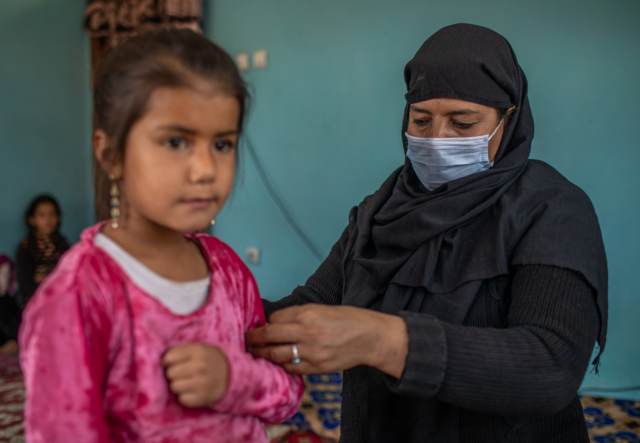
In the face of deteriorating conditions, some Afghans continue to help their communities. Nazo*, an IRC community health volunteer, educates mothers in her community about child malnutrition and teaches them how to prevent the spread of disease.
“I took this job to serve my country.” says Nazo, “My goal is to help as many people as I can. And, to utilize my education in saving my country from all these diseases.”
The country now requires $4.47 billion in aid. So far, the world has not scaled up humanitarian funding to meet this need.
Families are going hungry
A steep rise in food prices and high unemployment have led to a catastrophic hunger crisis in Afghanistan
Afghans are now forced to spend 90% of their income on food. Today a large share of families can’t get the food they need to live healthy lives, with 43% of the country surviving on just one meal a day.
With each week that goes by, more Afghans are forced to resort to the unimaginable to survive: that means skipping meals, taking on debt, pulling children out of school to save money–and even more extreme measures such as selling young daughters into marriage or selling organs.
One woman recently told IRC staff that she is forced to pick food from the garbage and if she can get enough of the hair and dirt off, she brings it home for her six children. Otherwise they go days without eating.
All told, extreme hunger now threatens the lives of 20 million Afghans.
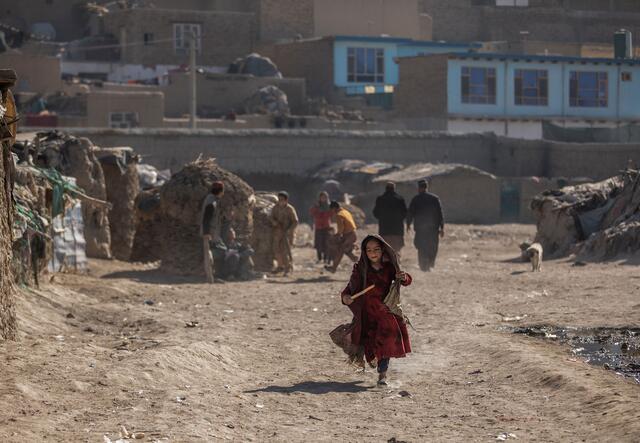
Women face increasing restrictions
The role of women in Afghan society is at risk of shrinking as the authorities continue to issue edicts impacting their access to work, education and their freedom of movement. Nearly all woman-headed households have lost their income.
The economic crisis itself has also been devastating for women and girls. As with hunger crises around the world, women and girls typically eat last in their household and suffer high levels of malnutrition as a result.
Moreover, women are indispensable to the delivery of humanitarian aid, education and health services. Without female staff services cannot reach women and girls, who are often among the most in need.
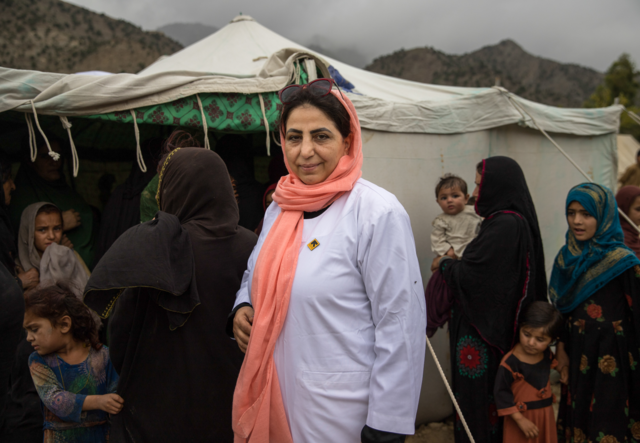
A recent IRC report found that 77% of women-led civil society organizations have lost their funding over the last twelve months. Most have had to stop the critical services they provide to the most vulnerable communities, especially women and children living in rural areas.
Dr. Najia Tareq is well aware of these issues. She runs IRC mobile medical units that provide health care to Afghanistan’s remote areas, which often lack basic infrastructure. Recently, she helped to form an all-female mobile health team to reach women in remote areas impacted by a major earthquake
“I am proud of my team,” she said. “They are very knowledgeable ladies and are very committed. They all feel that the women and girls who live in this area need their help.”
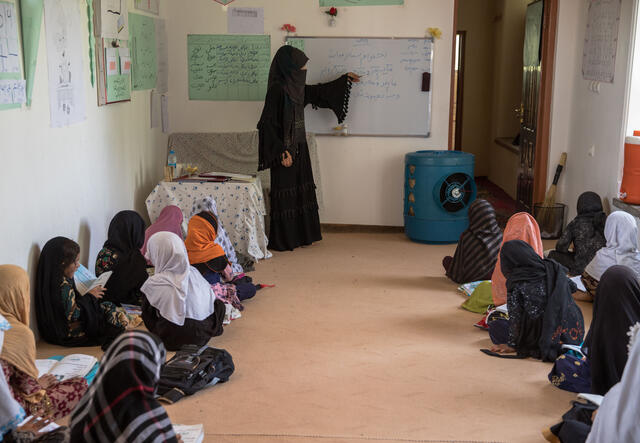
Can Afghan girls go to school?
Schools in Afghanistan are currently closed to girls above the sixth grade. This decision attacks the freedoms of women and girls and makes it harder for them to participate in society. While the IRC works to provide educational programs to Afghan girls who can’t access formal classrooms, there are many women and girls who remain barred from school.
In addition to denying girls their right to an education, this decision will undermine efforts to rebuild Afghanistan. The economic collapse has already seen many educated Afghans leave, and Afghanistan needs a future generation of doctors, teachers and civil servants.
Meet 5 Afghan girls determined to get an education
How can we help Afghans in need today?
Afghanistan is one of the world’s most fragile humanitarian crises. Millions of Afghans need immediate support. There are several ways the world can help.
Step up humanitarian funding
Humanitarians in Afghanistan have scaled up their work since the change in power, reaching millions in need. However, today the humanitarian response in Afghanistan remains only 44% funded. International donors must urgently step up.
Increased humanitarian funding will enable teams to provide health care to vulnerable populations, reduce the intensity of Afghanistan’s hunger crisis and can be used to empower women and girls.
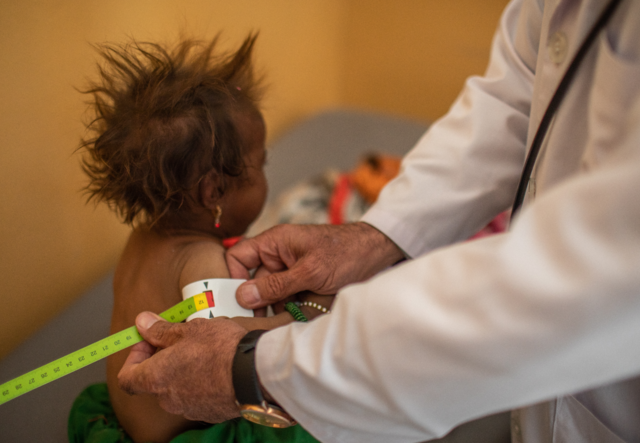
Reduce the economic pressure on Afghanistan
Humanitarian aid is crucial to saving lives but it will ultimately only address the symptoms of a failing economy, not the causes.
The isolation of Afghanistan from the international economy is having a severe impact on innocent families. World leaders must both engage with the current Afghan authorities to support critical needs such as health care, and take concrete steps to address the economic crisis.
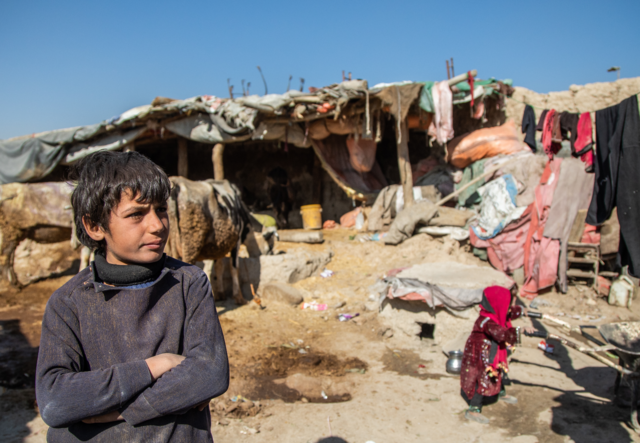
What the IRC is doing to help
In the last twelve months, the IRC has doubled-down on its commitments to the Afghan people. Our staff–99 percent of them Afghans themselves–are now operating across 12 provinces. They provide vital health services, education and support for women and girls in communities where we have developed deep relationships with community leaders. At the same time, our teams have tirelessly advocated for the inclusion of women in the humanitarian response and the IRC has maintained a staff body comprising 40% Afghan women.
*Last name omitted for privacy
